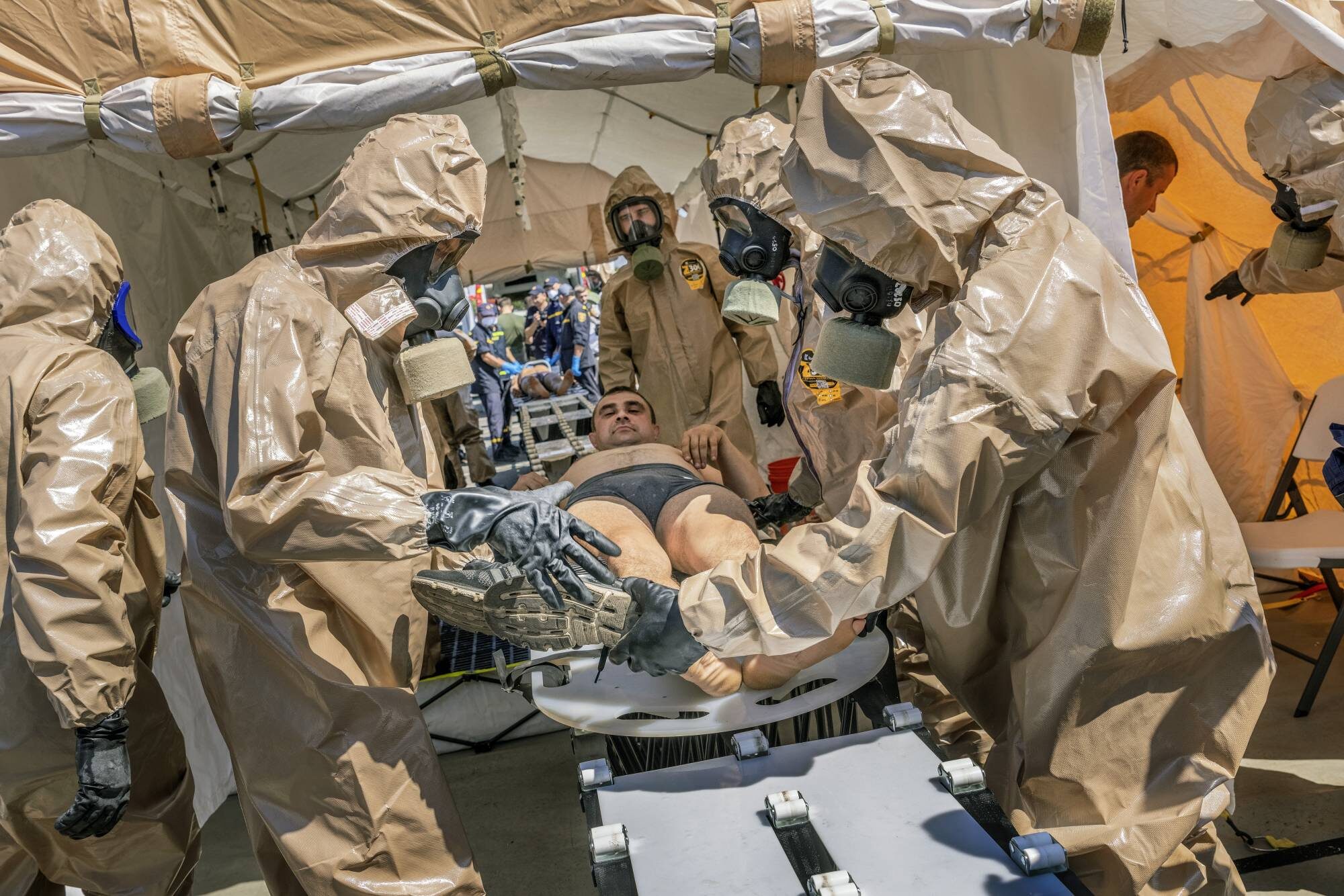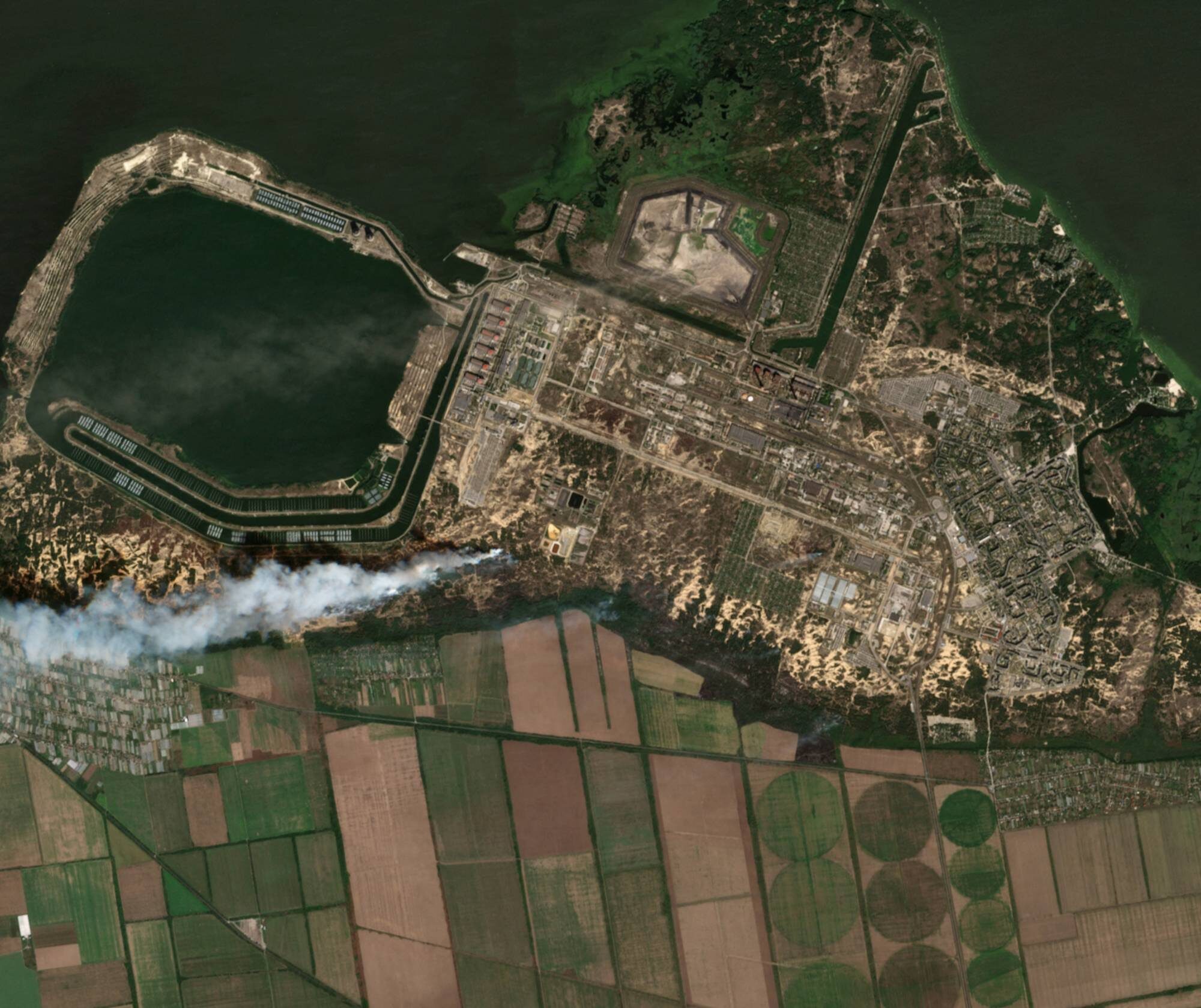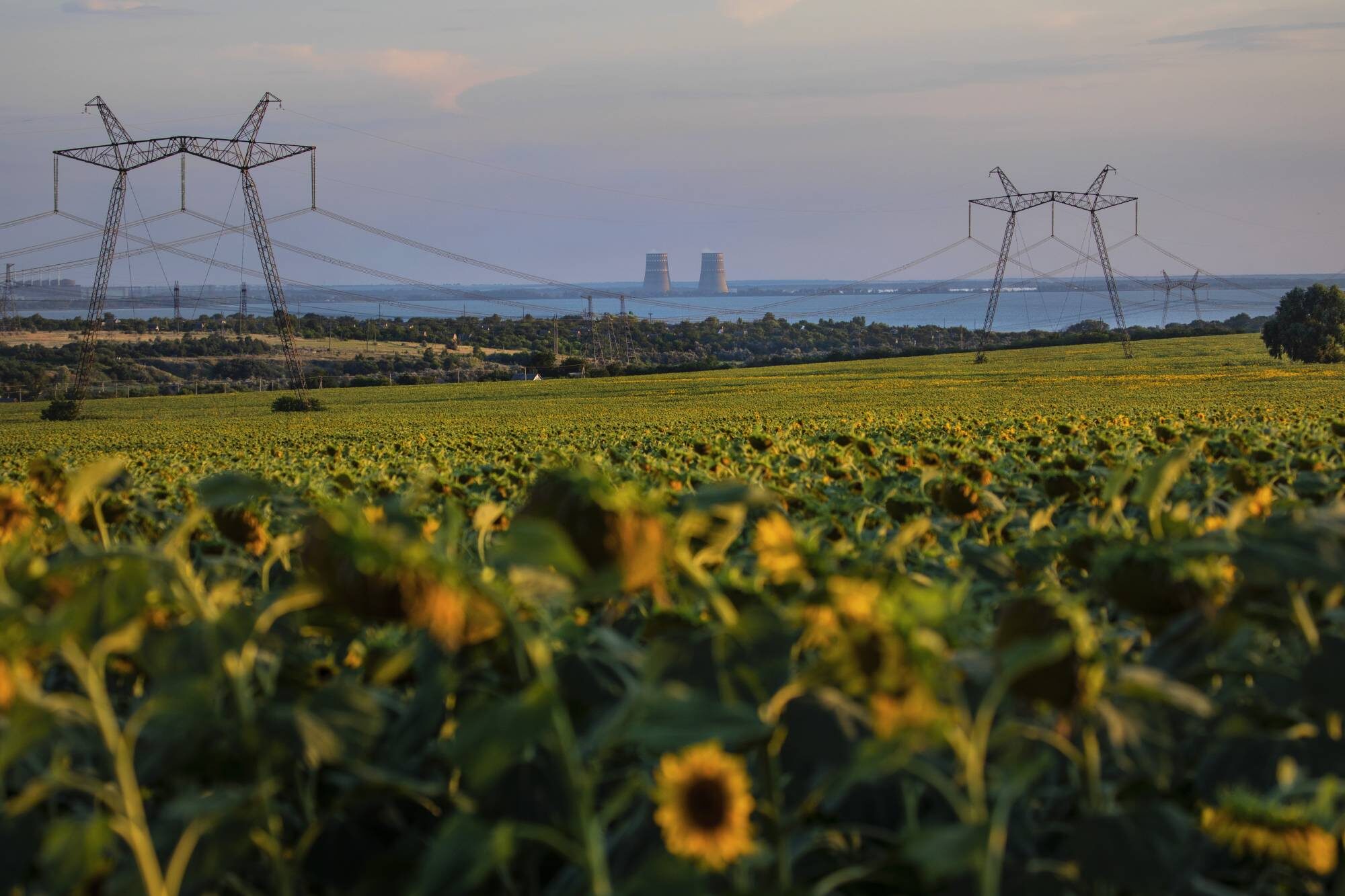
Comment: Ukraine are practicing a nuclear fall out drill for a catastrophe that their shelling would cause.
In a country still haunted by the memory of the 1986 Chernobyl nuclear disaster, officials urged the public not to panic even as complex negotiations to allow for a team of scientists from the International Atomic Energy Agency to visit the Russian-controlled plant in southeastern Ukraine took on added urgency.
The agency, the United Nations' nuclear watchdog, has assembled a team of experts to travel to Zaporizhzhia — Europe's largest nuclear power station — as early as this week.
A list of the team's members includes the nuclear agency's chief, Rafael Mariano Grossi of Argentina, and 13 other experts from mostly neutral countries. Neither the United States nor Britain, countries that Russia scorns as unfairly biased because of their strong support for Ukraine, is represented.
Comment: The West certainly is biased, they're supplying Ukraine with billions in taxpayers funds and weapons.
The IAEA headquarters in Vienna declined to comment on the planned mission. A spokesperson confirmed that the agency was "in active consultations for an imminent IAEA mission" to the plant.
But even as the details of a possible visit to the plant took shape, Russia and Ukraine again blamed each other for endangering the facility, which lies in the middle of a war zone.
Comment: As noted further above, thankfully, Russia has control over the area, which means that the attacks are obviously coming from Ukraine (or its backers), andyet this writer, and much of the mainstream media, would have us believe that Russia would be shelling itself?
Ukraine's nuclear energy agency, Energoatom, said Russia had shelled the plant late Friday and into Saturday morning. It also accused Russian forces of increasing pressure on the plant's staff before a possible IAEA visit "to prevent them from disclosing evidence about the crimes of the occupiers at the plant and its use as a military base."
Comment: Again, that doesn't make sense: Why would Russia be panicing when it is the one that has called, numerous times, for the IAEA to visit?
Within minutes of Energoatom's statement, Russia's Ministry of Defense put out its own statement saying that Ukraine had fired shells at the plant in the past 24 hours.
It was not immediately possible to confirm either account.
For now, both the Russians and the Ukrainians said radiation levels remained within normal range.

"I want to emphasize that the situation remains very risky and dangerous," Zelenskyy said, hours after the plant was reconnected to the grid. "That is why it is so important that the IAEA mission arrives at the plant as soon as possible."
Authorities have started to hand out the iodine pills as a precaution to people living within 35 miles of the plant. That area, home to an estimated 400,000 people in both Ukrainian and Russian-occupied territory, would be most at risk in the event of an accidental leak of radiation.
Comment: The area is occupied by Russia forces, and Russia is not going to instigate a disaster that would harm its forces, and thus its ability to neutralise the Western backed Ukrainian Nazis. Ukraine, on the other hand, that has been killing its own people since 2014, has both a motive and a damning track record.
The Ukrainian minister of health, Viktor Liashko, cautioned in an appearance on national television that people did not need to buy the pills, "as we have purchased the drug in exactly the dosage recommended by our researchers."
"One pill will be enough for the first stage. That's all," he said. "But at the moment, if it's not distributed to people, it is solely for the reason that there is no need to do so, or to ensure that people don't take it for preventive purposes, out of fear."
Comment: And yet this whole nuclear drill is actual a fearmongering, gaslighting campaign by Kiev.
Potassium iodide, also known by the chemical symbol KI, is used to saturate the thyroid gland with iodine so that inhaled or ingested radioactive iodine is not retained.
Dmytro Orlov, the exiled mayor of Enerhodar, a Russian-occupied town next to the nuclear power plant, said that although radiation levels around the plant were all within normal range, 25,000 iodine tablets were being distributed through personal doctors as a precaution. The Russians control the pharmacies in the city, residents say, but many physicians have kept working and can still distribute medicine.
Ukrainian regional authorities were also revising their public warning systems and evacuation plans in the event of an emergency. A notification system has been designed to warn people living both in government-controlled territory and areas under Russian occupation, said Oleksandr Starukh, the head of the Zaporizhzhia regional military administration.
"Since there will be no time to think in the event of real danger from the actions of the Russian invaders, it will be necessary to strictly adhere to the pre-approved action plan," he said. "Everything and everyone should work as a single mechanism."
The plant on Thursday temporarily lost all of its off-site electrical power from Ukraine's national grid, forcing it to rely on backup diesel-fueled generators for power and renewing concerns about its safe operation.
Comment: Was it Ukraine that withdrew power from the nuclear plant? It is certainly Russia that is providing the back up fuel to keep it running.

"Thursday's incident did bring this plant closer to the brink of a crisis than we have previously seen and should be a warning call about how vulnerable it is," Lyman said in a phone interview.
He said a visit to the plant by experts from the IAEA could help begin the implementation of measures that would lessen the risk of an "entirely preventable" disaster.
Ideally, said Lyman, who recently wrote an extensive review of the safety problems at the plant, all parties would agree to create a demilitarized zone around the facility, something Russia has so far resisted.
Comment: That's easy to understand, neither the West nor Ukraine can be trusted to maintain a demilitarised zone, with the repeatedly violated Minsk accords as just one example.
Short of that, he said, a visit by the IAEA would allow experts to inspect the plant's emergency response procedures and systems, as well as ensure a robust supply of diesel fuel for the backup generators and other diesel-powered emergency equipment at the site.
Despite mounting international anxiety over a possible catastrophe at the sprawling plant, Russia and Ukraine for weeks have failed to agree on a plan that would allow inspectors to visit. The continued shelling is complicating those discussions.
The warring nations have haggled over not just the composition of the inspection team but whether it would travel to the plant through territory occupied by Russian forces or controlled by the government in Kyiv.
Ukraine has insisted that the inspectors start out from government-controlled territory, to avoid giving legitimacy to the Russian occupation. That means the inspectors would have to pass through front-line positions where shelling is frequent and would probably use a crossing point already crowded with civilians fleeing the fighting and nuclear dangers. Any deal is likely to require a cease-fire along the route.
Moscow has said it supports the work of the IAEA, but has ignored pleas to withdraw military forces from the plant and its vicinity to create a demilitarized zone. Russia seized the facility, which comprises six nuclear reactors, in March at the start of its invasion, but Ukrainian engineers still operate it.
The IAEA mission includes experts from Poland and Lithuania, nations seen as friendly by Ukraine, but also others from Serbia and China, which Ukraine views with suspicion because of their cozy relations with Moscow.
The remaining members are from countries that have mostly stood on the sidelines of the war or that have kept channels open with the Kremlin. They include Albania, France, Italy, Jordan, Mexico and North Macedonia.
A senior diplomat familiar with the negotiations said that Russia had given its approval to the inspection team and indicated that it had acceded to Ukraine's demand that the mission originate in territory it controls.



Comment: Bearing in mind the revelations just prior to Russia's incursion, that Zelensky was seeking to start a nuclear weapons program, and now with Russia calling for a visit from the IAEA, what are the odds that the power plant contains weapons-grade Uranium? Might that explain Russia's urgent call for a visit, to expose Ukraine's nefarious activities?
RT reports on the scheduled visit: